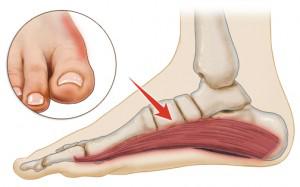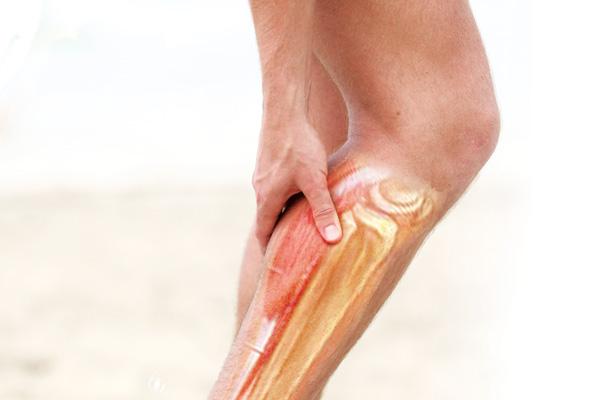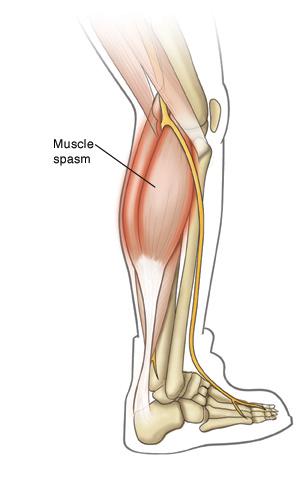A muscle cramp occurs when a muscle suddenly becomes forcibly and uncontrollably shortened and locked into a painful spasm. A spasm occurs when a muscle, or even a few fibers of a muscle contract involuntarily (i.e. without you consciously doing it). If the spasm is forceful and sustained, it becomes a cramp. A muscle cramp is thus defined as an involuntarily and forcibly contracted muscle that does not relax. This causes a visible or palpable hardening of the involved muscle. Muscle cramps can affect any skeletal muscle in the body but are most common in muscles or muscle groups that span two joints. However, in addition to these areas, cramps can also affect the hands, tummy muscles (abdominals), the muscles around the rib cage, and the feet and toes. Muscle cramps can last anywhere from a few seconds to (in severe cases) 15 minutes or longer. A muscle cramp in a particular location may also recur multiple times until it finally goes away. In severe cases, an episode of muscle cramping can even lead to post-cramping muscle soreness, akin to delayed onset muscle soreness (DOMS)

Despite being a very common condition that affects nearly everybody at some time in their life, the exact causes of cramps remain something of a mystery. What we do know is that cramping occurs when the normal mechanisms controlling muscle contraction and relaxation become temporarily impaired. These control mechanisms involve the electrical stimulation of muscle fibers (motor unit firing) and subsequent de-activation (relaxation). There are a number of physiological requirements for efficient muscle contraction and relaxation and if anyone of these requirements is not met, muscle cramping becomes more likely. These requirements include:
Anyone can experience muscle cramps, regardless of age, gender or fitness level. Cramps can occur not just while you exercise, but also while you sit, walk, or even just sleep. Sometimes, the slightest movement that shortens a muscle can trigger a cramp. However, in otherwise healthy people, the fact remains that muscle cramps are most common in endurance athletes such as marathon runners and triathletes, and those who perform strenuous physical activities without previous experience or lacking base conditioning. In short, the fitter and better trained you are for your event, the lower the risk of muscle cramps. Cramps are most likely to strike towards the end of intense or prolonged exercise, or around 4-6 hours later, indicating that muscular fatigue is a major factor. The obvious implication is that with improved fitness and conditioning, the risk of cramps can be significantly reduced. Along with it, FAST&UP RELOAD helps in reducing cramps and pain associated with it by maintaining electrolyte balance in body.
 |
 |
 |














